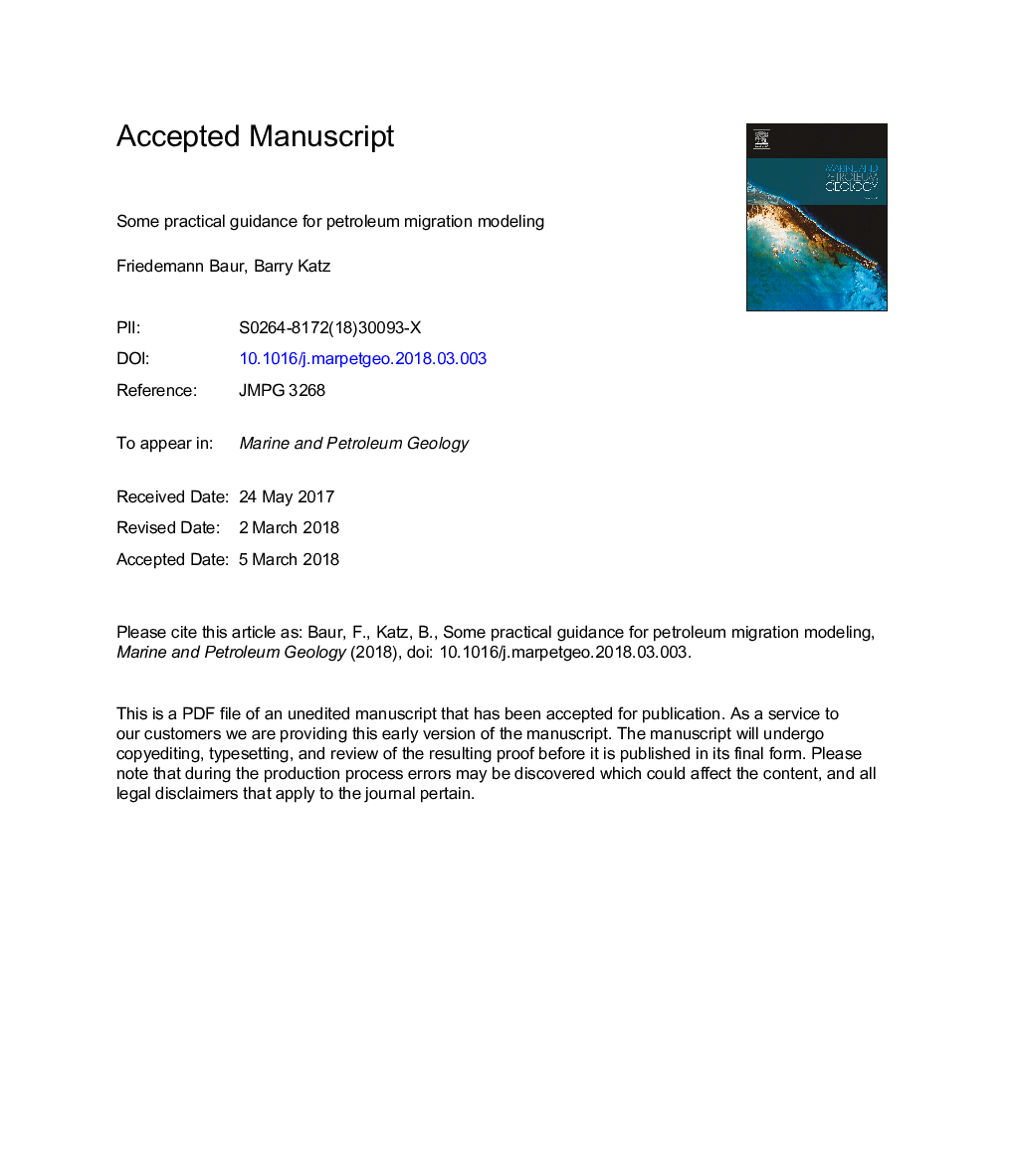| Article ID | Journal | Published Year | Pages | File Type |
|---|---|---|---|---|
| 8909112 | Marine and Petroleum Geology | 2018 | 32 Pages |
Abstract
Petroleum migration modeling is widely used to assess petroleum charge and fluid phase risk in exploration and appraisal. There are three principal migration methods: Darcy flow, invasion percolation, and flowpath (or ray tracing). Each method relies on different assumptions and yields different outcomes. This paper analyzes the strengths and weaknesses of these methods as they are implemented in PetroMod®, providing a practical guide as to how and when to apply each migration method. Flowpath is the most simplistic and computationally fastest method and should only be applied when a quick screening is required. Invasion percolation delivers satisfactory results for most geological settings, from structurally and stratigraphically simple to complex, but does not consider expulsion from the source rock properly. Darcy flow is the preferred method for unconventional resource assessments and supports maximum downward migration. A traditional modeling approach is to use two methods, applying Darcy flow to tight rocks and flowpath to highly permeable rocks. Another combined method can be used in such a way that Darcy flow is applied to the source rock and invasion percolation to the carrier and reservoir beds. The latter seems to deliver best results in most geological settings, while also providing more realistic results of secondary migration losses.
Related Topics
Physical Sciences and Engineering
Earth and Planetary Sciences
Economic Geology
Authors
Friedemann Baur, Barry Katz,
